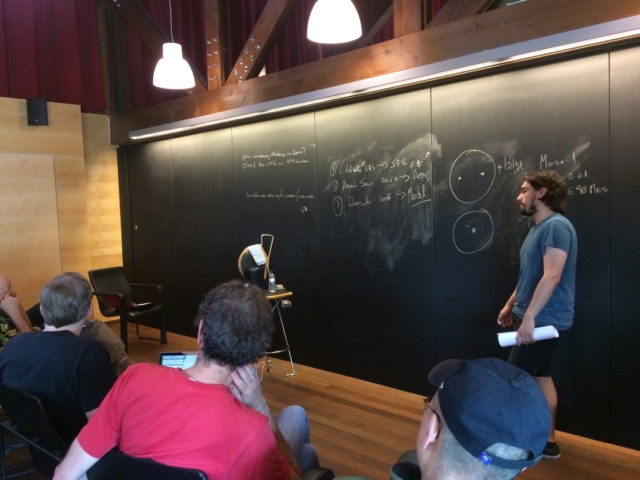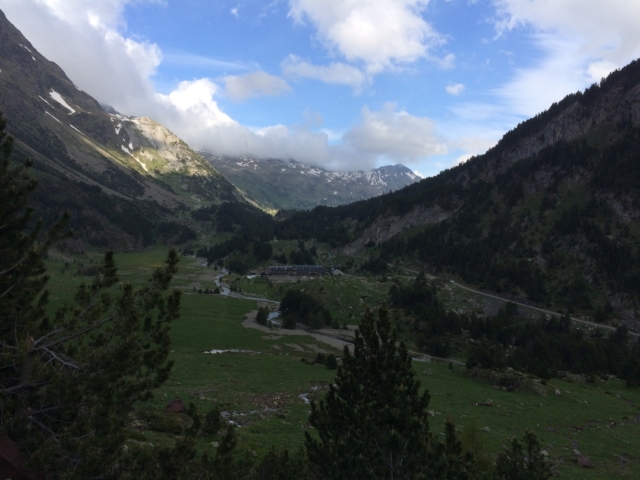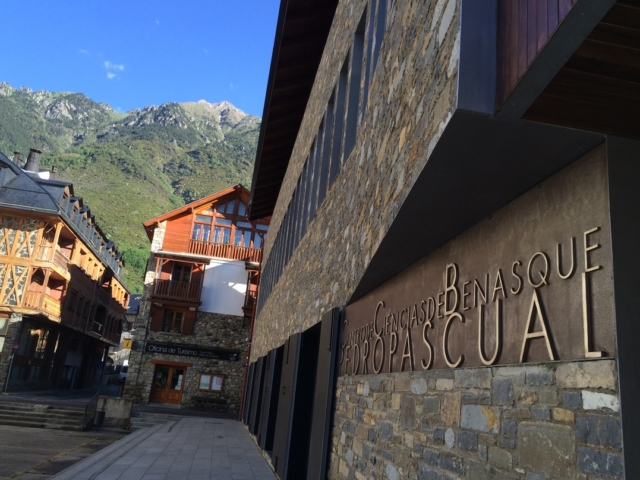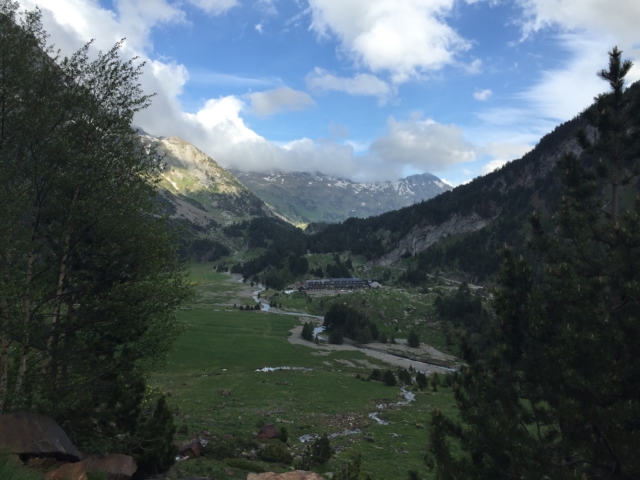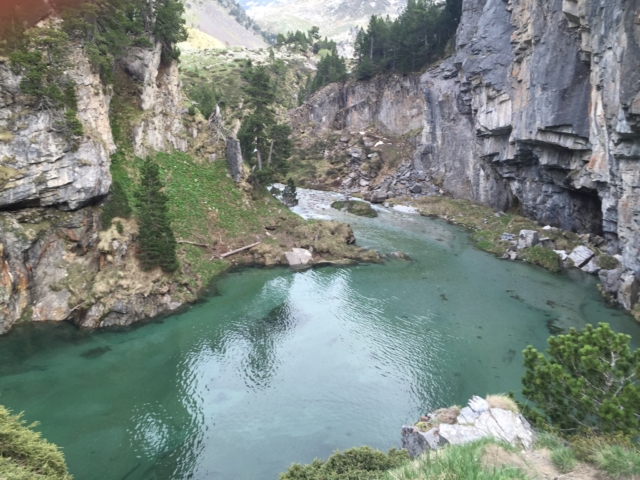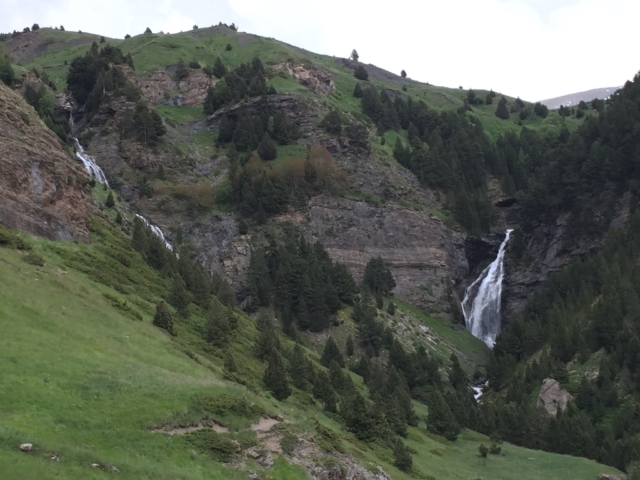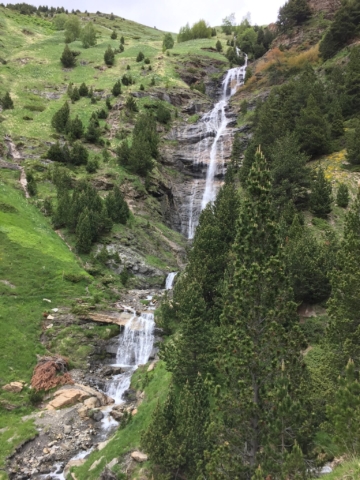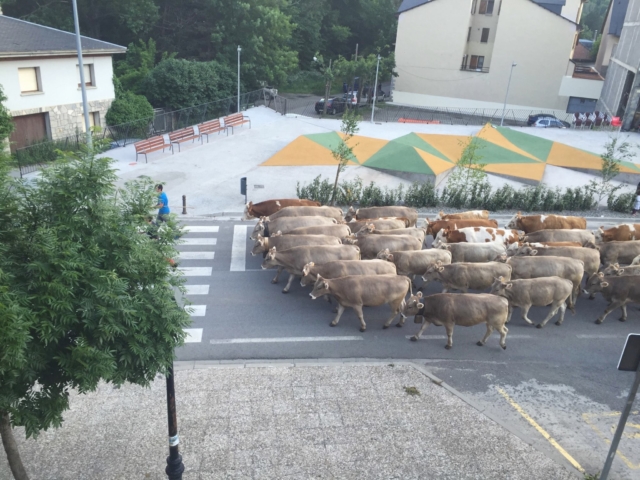TOPIC
ASTROPHYSICS, AND GENERAL RELATIVITY
Organised by Pau Amaro-Seoane and Massimo Dotti. June 5-18 2016
 The study of galactic nuclei has advanced rapidly during the past few years. Observations carried out with space-borne telescopes, such as the Hubble Space Telescope, or from the ground, using adaptive optics, have allowed us to study the kinematics of stars and gas in regions reaching down to sub-parsec scales for external galaxies, and to the milliparsec range for the Milky Way. An outstanding conclusion is that dark compact objects, very probably massive black holes (MBH), with masses ranging between a million and a thousand million solar masses, occupy the centres of most galaxies for which such observations can be made. We have discovered that there exists a deep link between the central MBH and its host galaxy. Claims of detection of “intermediate-mass” black holes (IMBHs, with masses between 100 and 10,000 solar masses) raise the possibility that these correlations extend to much smaller systems, but the strongest -if not totally conclusive- observational evidences for the existence of IMBHs are ultra-luminous X-ray sources. The origins of these IMBH are still shrouded in mystery, and many aspects of their interplay with the surrounding stellar cluster remain to be elucidated.
The study of galactic nuclei has advanced rapidly during the past few years. Observations carried out with space-borne telescopes, such as the Hubble Space Telescope, or from the ground, using adaptive optics, have allowed us to study the kinematics of stars and gas in regions reaching down to sub-parsec scales for external galaxies, and to the milliparsec range for the Milky Way. An outstanding conclusion is that dark compact objects, very probably massive black holes (MBH), with masses ranging between a million and a thousand million solar masses, occupy the centres of most galaxies for which such observations can be made. We have discovered that there exists a deep link between the central MBH and its host galaxy. Claims of detection of “intermediate-mass” black holes (IMBHs, with masses between 100 and 10,000 solar masses) raise the possibility that these correlations extend to much smaller systems, but the strongest -if not totally conclusive- observational evidences for the existence of IMBHs are ultra-luminous X-ray sources. The origins of these IMBH are still shrouded in mystery, and many aspects of their interplay with the surrounding stellar cluster remain to be elucidated.

A particularly important mode of interaction between stars and the MBH/IMBH is the disruption of stars by the strong central tidal field. This can trigger phases of bright accretion, possibly already observed in several galaxies as X-ray/UV flares. Secondly, collapsed stars such as neutron stars, white dwarves and stellar-mass black holes might be swallowed whole by the central MBH. This process is the result of a slow inspiral towards the event horizon because of the emission of gravitational waves (GWs). The detection of these small ripples of space and time constitute a unique and parallel way to probe the Universe, by reaching loci otherwise unaccessible to the photon.
The workshop will bring experts from rather different fields: stellar dynamicists, observers from optical and X/UV- ray, astrometry, general relativity and numerical modeling of different regimes (from kiloparsec distances to parsecs down to the horizon of the massive black hole). While these communities – theoretical and observational astrophysics, general relativity, cosmology – have made significant collaborative progress over recent years, we believe that it is indispensable to future advancement that they draw closer, and that they speak a common idiom.
In this workshop we will discuss the scientific opportunities that the first detection of a gravitational wave has opened, GW150914.
CONFIRMED PARTICIPANTS:
Kishor Adhav, Danor Aharon, Tal Alexander, Pau Amaro Seoane, Abbas Askar, Matthew Benacquista, Mishra Bhupendra, Matteo Bonetti, Xian Chen, Thomas Dent, Massimo Dotti, Camilo Fontecilla, Alessia Franchini, Felipe Garrido Goicovic, Francesco Haardt, Wlodek Kluzniak, Shiho Kobayashi, Bence Kocsis, Runqiu Liu, Youjun Lu, Alessandro Lupi, Cristian Maureira Fredes, Yohai Meiron, Cole Miller, Ivan Nieva, Marius Oltean, Hagai Perets, Pradyumn Sahoo, Alberto Sesana, Naoki Seto, Carlos Sopuerta, Qingjuan Yu

MOVIES OF THE TALKS:
Thomas Dent: “A very, very basic introduction to LIGO and GW150914 (1/4)”

Thomas Dent: “A very, very basic introduction to LIGO and GW150914 (2/4)”

Thomas Dent: “A very, very basic introduction to LIGO and GW150914 (3/4)”

Thomas Dent: “A very, very basic introduction to LIGO and GW150914 (4/4)”

Matt Benacquista: “Something to do with gravitational waves from stellar mass black hole binaries (1/2)”

Matt Benacquista: “Something to do with gravitational waves from stellar mass black hole binaries (2/2)”

Felipe Garrido: “Infalling clouds onto massive black hole binaries (1/2)”

Felipe Garrido: “Infalling clouds onto massive black hole binaries (2/2)”

Cole Miller: “Dynamical Formation of Double Black Hole Binaries”

Cristian Maureira: “Gaseous discs around supermassive black holes (1/2)”

Cristian Maureira: “Gaseous discs around supermassive black holes (2/2)”

Alberto Sesana: “Pulsar timing: observing gravitational waves with a galactic scale detector (1/2)”

Alberto Sesana: “Pulsar timing: observing gravitational waves with a galactic scale detector (2/2)”

Matteo Bonetti: “Post-Newtonian Dynamics of Massive Black Hole Triplets”

Alessia Franchini: “Lense-Thirring precession in black hole systems (1/2)”

Alessia Franchini: “Lense-Thirring precession in black hole systems (2/2)”

Carlos Sopuerta: “Testing Strong Field Gravity with Extreme-Mass-Ratio Inspirals”

Abbas Askar: “Merging Black Hole Sources Originating from Globular Clusters (1/2)”

Abbas Askar: “Merging Black Hole Sources Originating from Globular Clusters (2/2)”

Hagai Perets: “Collisional evolution and formation of exotic binaries in the field”

Bhupendra Mishra: “Disk instability and quasi-periodic oscillations in relativistic MHD simulations (1/2)”

Bhupendra Mishra: “Disk instability and quasi-periodic oscillations in relativistic MHD simulations (2/2)”

Shiho Kobayashi: “Electromagnetic Emission from Compact Stellar Mergers (1/2)”

Shiho Kobayashi: “Electromagnetic Emission from Compact Stellar Mergers (2/2)”

Francesco Haardt: “The Nature of Massive Black Hole Seeds (1/2)”

Francesco Haardt: “The Nature of Massive Black Hole Seeds (2/2)”

Alessandro Lupi: “Forming BH seeds in nuclear stellar clusters and probing them with tidal disruption events”

PICS



















